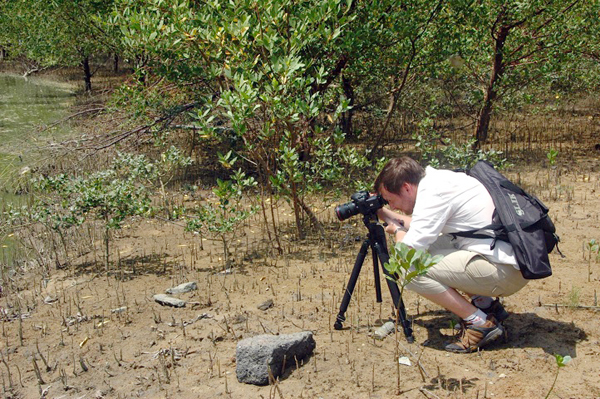The Chinese Alligator: Species On The Brink from Sean Gallagher on Vimeo.
In April of 2010, I was awarded a grant from the Pulitzer Center on Crisis Reporting, to cover the issue of China’s disappearing wetlands. This provided me with the first opportunity to seriously shoot video on assignment with a Canon 7D. As I am primarily a stills photographer, I was keen to embrace video and start to use it to tell stories better.
Having interned at Magnum Photos during 2004-2005, I took workshops under photographers such as David Alan Harvey and Alex Webb, serious proponents of the “one body, one lens” mantra. I adhered to this fairly strictly in my still photography and always kept my gear to a minimum. I knew that by embracing video, it would force me to use a lot more equipment.
I spent six weeks this summer on the road for the Pulitzer Center, travelling mostly on my own across China through urban and rural areas. I had to keep my equipment to the bare minimum as it would be only me and I needed to be able to pack everything into one backpack, including clothes and other essential items. I took on the concept of ‘Backpack Journalism’, coined by Bill Gentile of American University, whom I met in Washington DC last year when giving talks about my environmental work. His philosophy was key in aiding my transition to becoming a video-shooter.

My basic travelling kit consisted of one Canon 7D body, back-up 50D body with 16-35 F2.8, 50mm F1.8 , 70-200 F4.0 lenses. I also took with me a Zacuto Z-Finder, M-Audio Microtrack II, Slik tripod, TC-80N3 time remote controller for time-lapses and a LED light (generic Chinese brand). Storage-wise I travelled with my MacBook and 500GB Buffalo Portable USB 2.0 hard drive. Shooting was done onto six 8GB cards.
The 7D has been great to use and I am constantly amazed by the visuals it produces. There have been a lot of limitations I have found that need to be overcome.
Audio is a challenge. I use the M-Audio Microtrack II which is a great little recorder producing very good sound. I tend to assess the situation before I shoot it to determine whether or not I will need high-quality audio from it. I use voiceovers from experts a lot, so I separately record audio by using a lavalier mike and syncing sound later in post. I’ve found noise-reducing earbuds to be essential when recording.

I quickly learned that handheld shooting wasn’t really much of an option.To get the visuals I want my tripod has become my new best friend and I’d say I now use it for 95% of my video. In the Chinese alligator piece, I was using my 70-200 F4.0 lens a lot which meant using a tripod all the time. Hand-held would have been out of the question.
Overheating was a little bit of a problem too. I was shooting a lot in the height of summer in sub-tropical southern China and I occasionally got the overheating warning sign. Stopping for a few moments, ejecting the memory card and letting things cool down usually worked okay.
My goal for my work for the Pulitzer Center is to produce stills and video and combine them together in a series of multimedia pieces, rather than just straight video.
The biggest challenge of embracing video has been to learn when to know when is the right time to shoot either stills or video. It is inevitable that when you are shooting video, you will miss some great stills and vice versa. If you are able to accept this, you learn to quickly assess the action as it unfolds in front of you and determine what each situation requires. I’ve learnt to change the setting on my camera almost blindfolded, so I can change them as quickly as possible when shooting and adjust to what’s happening in front of me.
Before I began my travels I read many books on documentary video shooting, to give myself a foundation from which to build. Having a great camera was all well and good but if I had no idea how to shoot good video, then I knew I’d run into problems quickly. I highly recommend Directing the Documentary by Michael Rabiger and Shot by Shot by Steven D. Katz as reference books for those just starting out.
About Sean Gallagher, Freelance Photographer and Videographer, Beijing:
Sean has been based out of Beijing for four years, shooting for editorial and commercial clients. His work focuses mainly on environmental issues and has been featured in National Geographic China, TIME Europe and with the New York Times. He is a two-time recipient of the Pulitzer Center on Crisis Reporting travel grant (2009+2010) and was the first recipient of the David Alan Harvey Fund for Emerging Photographers, in 2008.






